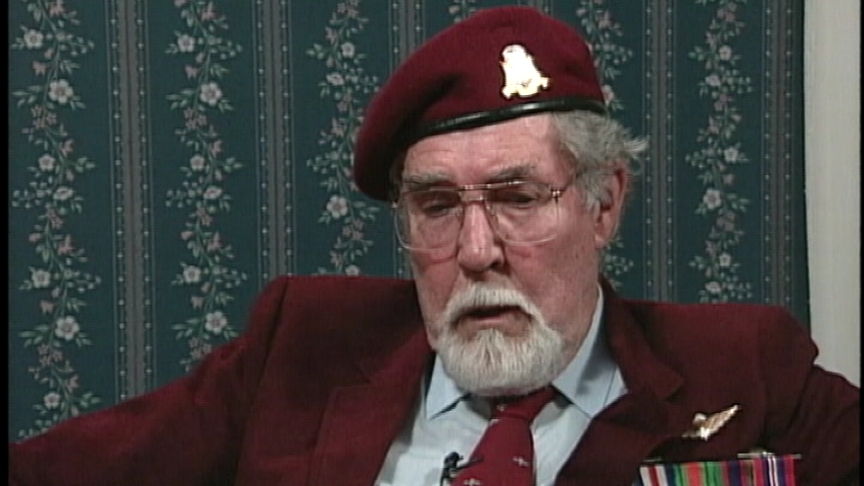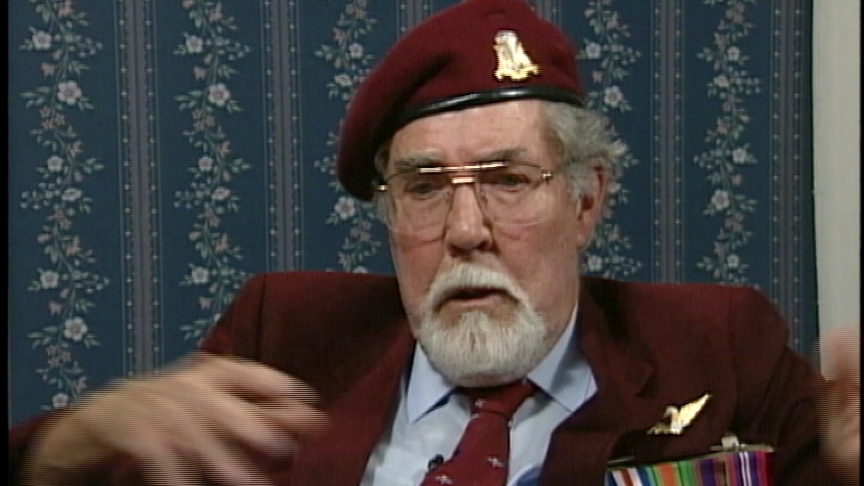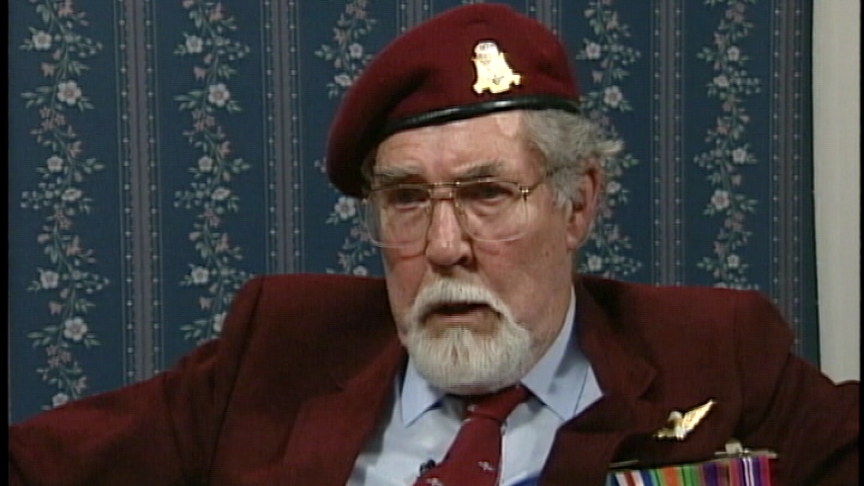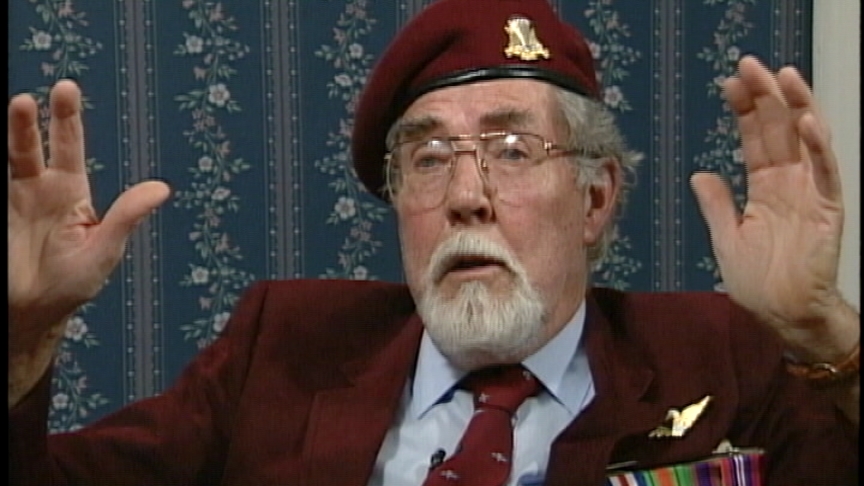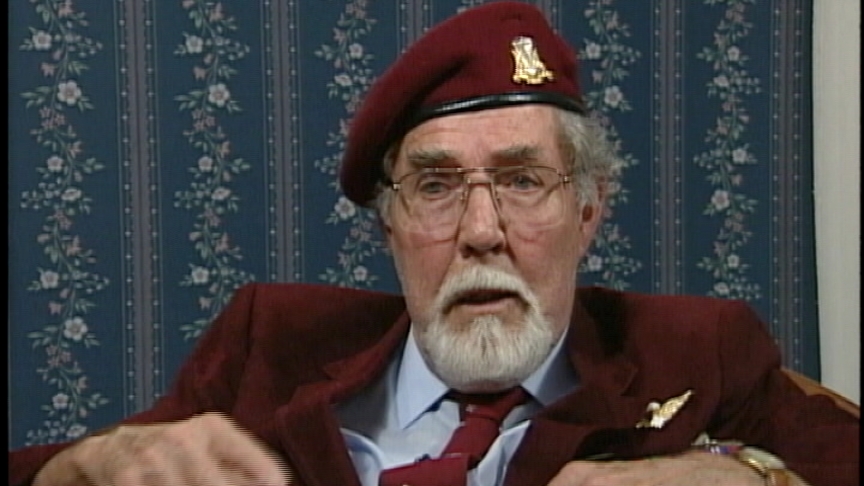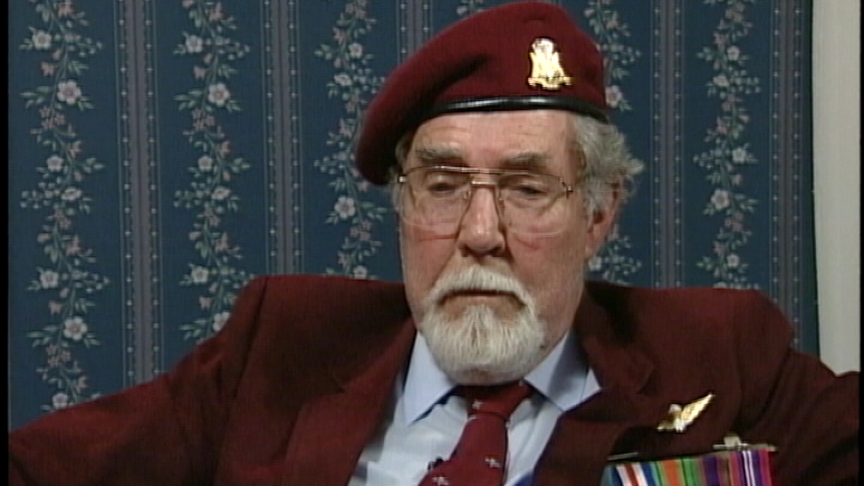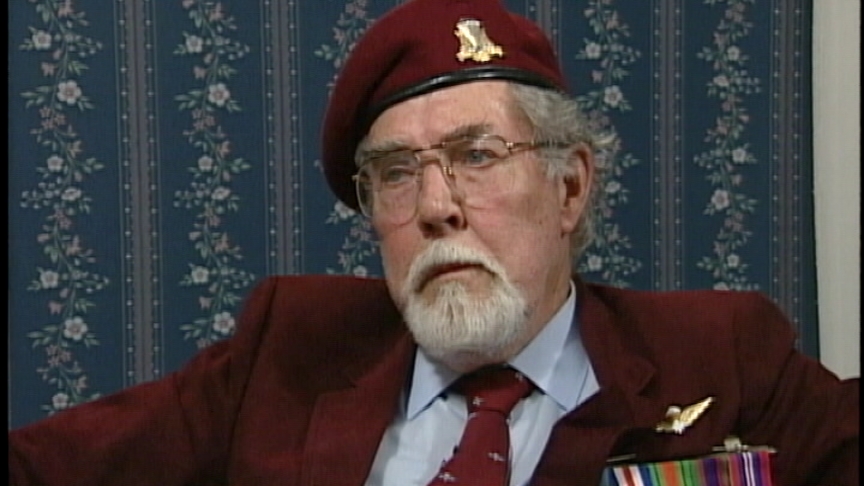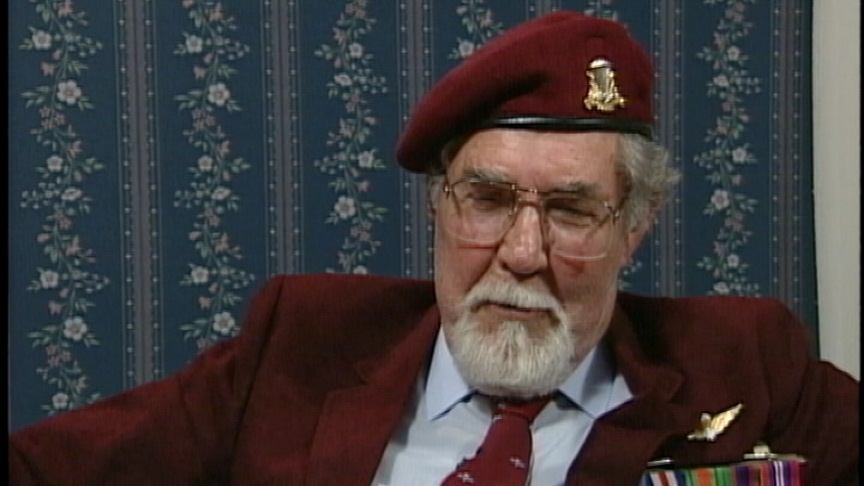Becoming A Paratrooper
Heroes Remember
Becoming A Paratrooper
Transcript
Description
Despite being turned down by the Navy due to a weak left eye, Mr. Melanson persevered. He tells us about the path that led him to becoming a paratrooper.
Russel C Melanson Sr.
Mr. Melanson was born in Mill Village, Nova Scotia, on August 16, 1922. He worked on a farm and in the woods, and completed his education before his first attempt to enlist. He was turned down by the navy as he was underage. Similarly, after joining the West Novies, an artillery regiment, he was discharged for being underage. He was finally accepted into the 1st Canadian Parachute Battalion and completed his basic training in Shilo, Manitoba. Once overseas, he was attached to the 3rd Brigade, 6th Airborne Division. Mr. Melanson's first action was at the Battle of the Bulge. His second was the Allied /Russian advance into Germany from the east. After leaving the army, Mr. Melanson became a hydrographer, and retired as the Regional Hydrographer, Bedford Institute of Oceanography.
Meta Data
- Medium:
- Video
- Owner:
- Veterans Affairs Canada
- Duration:
- 4:10
- Person Interviewed:
- Russel C Melanson Sr.
- War, Conflict or Mission:
- Second World War
- Location/Theatre:
- Canada
- Branch:
- Army
- Units/Ship:
- 1st Canadian Parachute Battalion
- Rank:
- Sergeant
- Occupation:
- Paratrooper
Related Videos
- Date modified:



